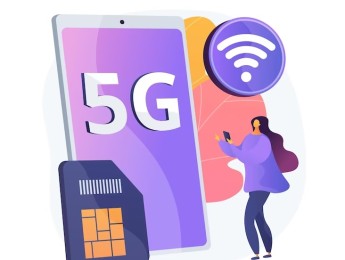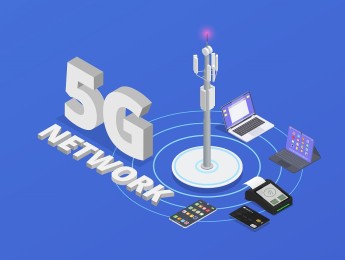The technologies surrounding broadband are constantly evolving, and it is predicted that new mobile network technologies will be developed every 10 years. However, this prediction may be shortened dramatically by the rapid technological developments occurring.
To truly grasp the concept of future transformations of broadband, it is essential to evaluate previous generations of technology and how they have advanced. Many factors to consider when making broadband improvements include frequency bands, peak data rates, ease of user mobility, security and congestion balance. When creating new technologies, components and features are often adapted and integrated from previous generations, where extensive testing is needed to ensure all technologies are compatible.
With the current generation of 5G, there has been a strong shift in focus. Previous generations focused on standardisation and keeping the physical demand of the network low. 5G has taken on the new challenge of allowing for more demanding usage from the network, and allowing users to use 5G networks as they would a wired network. 5G has much greater capabilities regarding data transmission in all regards.
Upon completion of this course, participants will be able to:
- Understand the importance of mobile broadband.
- Review the evolution of broadband technology.
- Identify the role of 3GPP.
- Reflect on 3GPP enhancements and how it has developed into used technology today.
- Evaluate generational system architectures and compare previous generations to the current generation.
- Assess the advantages and disadvantages of LTE-Wifi.
- Utilise a range of broadcast and multicast techniques.
- Understand the concepts of eMTC and Internet of Things (IoT).
- Analyse services provided within 5G.
- Compare and contrast 5G architecture to previous technology architecture.
- Predict future technological advancements.
This course is designed for anyone who wishes to develop their broadband and data transmission knowledge. It would be most beneficial for:
- Electrical Engineers
- System Analysts
- Communication Specialists
- Electrical Engineering Managers
- Technical Managers
- Network Consultants
- Software and System Engineers
- IT Professionals
This course uses a variety of adult learning styles to aid full understanding and comprehension. Participants will review established 5G networks to highlight key features of the architecture and protocols.
They will be supplied with all the necessary equipment for the given learning exercises. Participants will participate in presentations, open discussions, practical demonstrations, and activities to enhance their understanding of the subjects. Combined with the individual activities where they can personally investigate features of 5G networks, they will have ample opportunities to develop a full and in-depth understanding of the content.
Day 5 of each course is reserved for a Q&A session, which may occur off-site. For 10-day courses, this also applies to day 10
Section 1: Introduction to Broadband
- Defining the purpose of broadband.
- The process of broadband evolution, from innovation to implementation.
- The capabilities and limitations of broadband technologies.
- Understanding the architecture of Long-Term Evolution (LTE).
- Key features of LTE and spectrum sharing.
- The importance of antennae technology for broadband.
- The role of Orthogonal Frequency-Division Multiple Access (OFDMA).
Section 2: LTE Services
- Analysing the differences between licensed and unlicensed spectrums.
- Scheduling principles of the different spectrums.
- Defining LAA, LWA, EPC and D2D services.
- Merging the use of RANn and LWA for a more effective system.
- The architecture, protocols and principles of LWA and EPC.
- The implementation of device-to-device (D2D) services.
Section 3: Internet of Things
- The concepts and principles of IoT systems.
- Utilising IoT systems for increased automation.
- Integrating the use of vehicle-to-vehicle (V2V) and machine-to-machine (M2M) as common practice.
- The capabilities and limitations of v2V.
- Geolocation handling, transmission and service authorisation for vehicle-to-everything (V2X).
- The differences between IoT and Nb-IoT.
- Combining LTE with Nb-IoT technologies to create 5G.
Section 4: Architectural Advancements
- Key features and functions of eMTC.
- Incorporating eMTC into standard use.
- Transitioning throughout technologies.
- The advancement from 4G to 5G.
- Analysing technology operations, frequency bands and key protocols.
- Prioritising user mobility and establishing dedicated core networks for 5G.
Section 5: Implementing 5G
- Enhancing security measures to protect network integrity and user data.
- The vital role of Cloud data systems.
- Managing network congestion in high-traffic areas.
- Furthering automation with self-organising networks (SON).
- Balancing proximity services.
Upon successful completion of this training course, delegates will be awarded a Holistique Training Certificate of Completion. For those who attend and complete the online training course, a Holistique Training e-Certificate will be provided.
Holistique Training Certificates are accredited by the British Assessment Council (BAC) and The CPD Certification Service (CPD), and are certified under ISO 9001, ISO 21001, and ISO 29993 standards.
CPD credits for this course are granted by our Certificates and will be reflected on the Holistique Training Certificate of Completion. In accordance with the standards of The CPD Certification Service, one CPD credit is awarded per hour of course attendance. A maximum of 50 CPD credits can be claimed for any single course we currently offer.
- Course Code IND07-103
- Course Format Classroom, Online,
- Duration 5 days














